#romanian orthodox church
Text






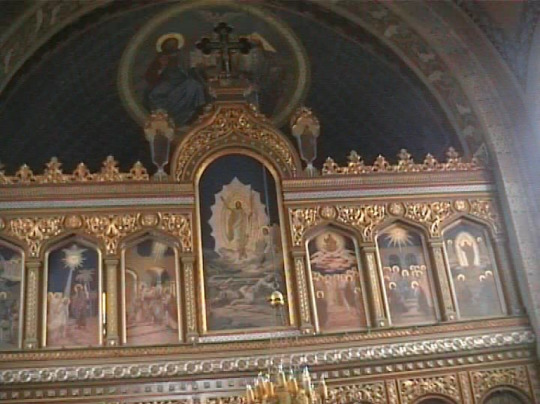

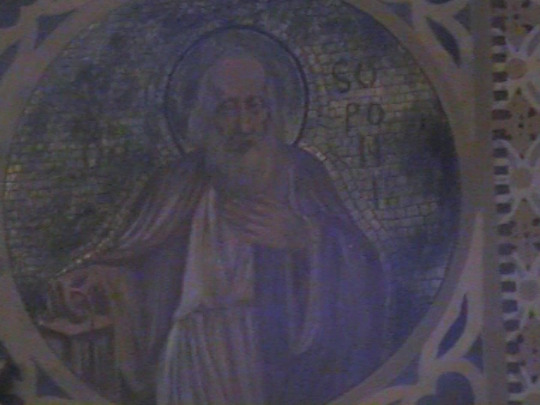

10 notes
·
View notes
Text

still bucharest
#romanisme#romania#bucharest#bucuresti#church#orthodox#orthodox church#architecture#street photography#eastern europe#balkans#slavic aesthetic#romanian artist#dark art#obscure art
8 notes
·
View notes
Text
This orthodox church building is located up on Ialomita Cave Monastery and Sanctuary. You will find this tourist spot on Bucegi Mountains of Romania.
The Church was built by Dracula's son Mihnea when he was Prince of Wallachia from 1508 to 1509. In the Wallachian list of Voivodes, Dracula’s son was the 24th prince.
This cave behind the church is thousands years old, is nicknamed as Bear Cave and been the discovery site of several pleistocene animals remains including Cave bears.



#son of dracula#its the truth#therealalucard#historical#history#romania#romanian#sibiu#eastern orthodox#church#cave#monastery#ancient#pleistocenemegafauna#pleistocene#cave bear#ialomita cave monastery#ialomita church#mihneacelrau#sonofdracula#voivode#voivodeship#wallachia#wallachianprince#transylvania county#christianity#easternorthodoxchurch
44 notes
·
View notes
Text



The Carpathian horn
The bucium (tulnic) is a type of alphorn used by mountain dwellers and by shepherds in Romania. It has also been used in the past as a signaling instrument in military conflicts.
The tube is made from limetree bark, wood, or even (partially) from metal. It is mostly used by shepherds for signaling and communication in the forested mountains, as well as for guiding sheep and dogs.
In the last picture: a mural in Voroneţ Monastery showing an angel playing a bucium at the onset of the Last Judgment.
Video 🎶: Romanian traditional folk song at Carpathian horn (bucium), recorded in 1977.
https://youtu.be/DN6f7XfoLc0
Photography: Pinterest.com
#romania#rural romania#transylvania#transylvania county#rural#folk costume#romanian folk costume#folk music#music#aesthetic#rural life#signals#europe#eastern europe#travel#travel the world#traditionalism#romania churches#orthodox church
99 notes
·
View notes
Text
what if i wrote my college application essay about the trauma of my mom treating my romanian heritage as if it's freakish
#idk smth smth about my mom comparing cultural practices to the occult and saying their cuisine is disgusting#and saying my baptism wasn't real bc it was done in an orthodox church and making me get a “good” and “correct” evangelical baptism#and also the way my mom estranges me from knowing about my biological mother#literally has to try and justify the negative things she says by saying “i don't hate her. she was just weird”#jesus fucking christ#and also the way my mom made sure i got adopted because she didn't want my ROMANIAN FAMILY TO TRY AND CONTACT ME#because she was paranoid that they would try to take me away from her. like she was forever predestined to be my mother or smth#telling me that even though she didn't give birth to me she always knew that she was my true mother. and not my actual (romanian) mother#i told her i had a SINGLE memory of romania and asked if i'd visited a second time during early childhood#and she told me for the first time (mind you that i had lived with her for THIRTEEN YEARS) that i had lived in romania for six months#FOR HALF A FUCKING YEAR#AND SHE NEVER TOLD ME#and then later she was like 'why did you want to know that. are you contacting your grandmother in romania'#GIRL WHAT THE FUCK NO#MAYBE I JUST WANT TO ACTUALLY KNOW ABOUT MYSELF#and she never told me the whole fucking truth abt my bio mother either#i had to figure it out myself at a CHURCH CAMP when i was FIFTEEN#and it was confirmed not by her but by my FRIEND who knew before I DID because HER MOM mentioned it at FUCKING DINNER ONE DAY
1 note
·
View note
Video
youtube
Today is the last day, Christ is risen friends!
#Christ is Risen#chanting#Orthodox Christianity#Christianity#orthodoxy#Finnish language#Javanese language#Italian language#Dutch language#Church Slavonic language#Spanish language#Georgian language#romanian language#Pomak language#English language#Greek language#French language#Indonesian language#Ukrainian language#Portuguese language#Aleut language#German language#Aramaic language#Macedonian language#Hebrew language#Arabic language#Polish language#Norwegian language#Bengali language
4 notes
·
View notes
Text
There are several languages I've wanted to learn for so long. But gendered words and non metric counting methods frankly terrify me.
For the record they're French German, Kurmanji, Norwegian, and Welsh
#if my life had routine I'd probably actually be able to start one#already know some German from school#and just enough Romanian to be excommunicated by the orthodox church
0 notes
Text
(...) For almost five centuries, their slave labour resulted in huge earnings for their masters: landowers, the feudal aristocracy and the Orthodox Church. Romani people's status was that of subjugated people, the absolute property of their masters: their masters' personality, faith and habits dictated their whole existence.
After 1500, even though the number of slaves decreased dramatically in Catholic and Protestant Europe - as slaves were transferred to overseas colonies to work - slavery flourished in Romanian Principalities. 'In the 16th, 17th, and 18th century we were probably the only country in Europe which had a class of people with this label of slave or bondsman', states Professor doctor Constantin Bălăceanu Stolnici.
Roma bondsmen were subjected to atrocious treatment.
For five centuries, they were denied the status of human being. Among the cruellest punishments was that of wearing a collar fitted with iron spikes on the inside that prevented the wearer from lying down to rest.
Most of the writing we have about this topic comes from foreigners travelers, staggered by this behaviour.
"The squires are their absolute masters. They sell or kill them like cattle, at their sole discretion. Their children are born slaves with no distinction on sex"
- Comte d'Antraigues.
Jean Louis Parrant, who was in Moldavia during the French revolution, asks himself: 'What can be said about this numerous miserable flock of beings (because they can’t be otherwise described) that are called gypsies and are lost for the humanity, placed on the same level with the cattle of burden and often treated even worse by the their barbaric master whose revolting (so-called) property they are?'
Mihail Kogălniceanu, a former Romanian politician who played a significant role in the abolition of slavery, remembers growing up in a provincial Romanian town and seeing people 'being with hands and feet enchained, with iron circles around their forehead or metal collar around their neck. Bloody whips and other punishments such as starvation, hanging over a burning fire, the detention barrack and the forcing to stay naked in snow or in the frozen water of a river - this is the treatment applied to the miserable gypsies.'
Legislative texts, referring to them under a double denomination - gypsies or bondsmen - stated that they were born slaves; that every child born from a slave mother was a slave; that their masters had power of life and death over them; that each owner had the right to sell or offer his slaves; and that every masterless gypsy is propriety of the state. The list goes on... (...)
In 1600, a gypsy fit for work was worth the same as a horse. In 1682, a gypsy woman was worth two mares with foals. In 1760, three gypsies were worth the same as a house, and in 1814, Snagov Monastery was selling a gypsy for the price of four buffalo. There were also cases when gypsies were sold according to their weight, exchanged for honey barrels, pawned off, or offered as presents.
The abolishment of Roma slavery began with young artistocratic Romanians leaving to study in Western Europe. Upon returning home, they gave voice to progressive ideas denouncing slavery.
At the same time, Western Europe, and France especially, exerted considerable pressure on the newly formed Romanian state regarding the abolition of slavery. In the middle of the 19th century, there were half a million slaves on Romanian territory: 7% of the population.
Unfortunately, until now, Roma slavery has not been yet included in most history school books, and there are still very few Romanians who are aware of this historical reality. (...)
50 notes
·
View notes
Text
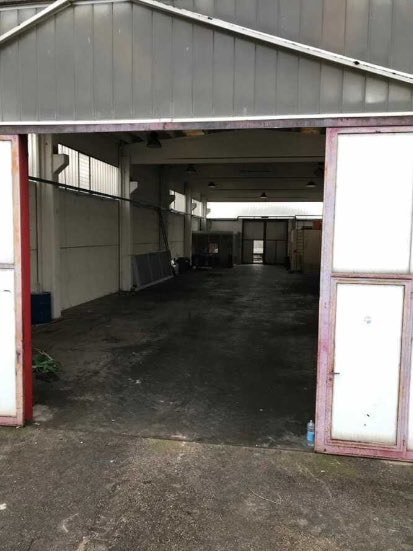

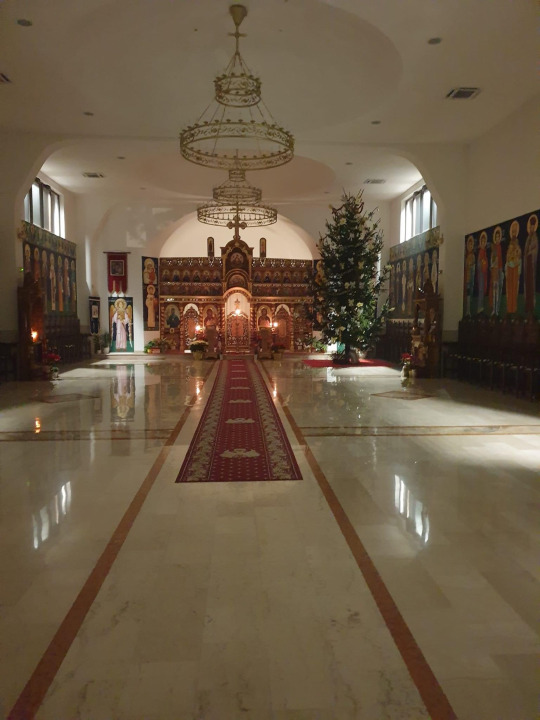

Orthodox Christians transformed a warehouse into a church in Italy
An Orthodox service was served for the first time in the Romanian Church in Montichiari, Italy, on Tuesday evening, February 9 2021. Dean Rev. Gelu Porumb, the parish priest Gabriel Pandrea and several other clerics officiated the Lesser Sanctification of Waters and the Mystery of Unction.
The story of the new Romanian church illustrates very well the saying “Man sanctifies the place.” The building is actually a capannone, as Italians say, meaning a former production hall or warehouse.
The spiritual protectors of the parish are St. Gregory the Enlightener of Greater Armenia and St. Artemius the Greatmartyr. The place of worship is located on Via Erculiani, 31 in Montechiari, Italy.
[source]
18 notes
·
View notes
Text
what was bucky calling himself in romania? did he use the romanian variant of James (Iakob) when he talked to people and had to give them a name? how did he even learn romanian? does he have romanian heritage? did he learn it during the war? how did he pay rent? was he working in construction or as a line cook or something? did he have a little old lady as a neighbour who thought he was too skinny and lonely and forced him to eat with her at least once a week? did she make him help with cooking so he could make the food himself? did he go to the orthodox church with her? did the local kids like him? did he cut his hair himself or did he brave going to a barbers to keep it at a length he liked? did he like talking to market sellers about fruit because it was an easy conversation and a way for him to get used to socialising?
i have SO many questions about bucky in romania
#like i know it was just a nod to sebstan being romanian which is very cute imo#but also the logistics of this#is bucky romanian? is his mother romanian and changed her last name when she married his dad?#did he grow up orthodox or protestant?#why romania?#its a smart move going to a capital city and hiding in plain sight especially considering how much he physically changed over those two yea#homeboy was eating snacks all the time and absolutely thriving#except the whole 'sleeping bag on the mattress' situation but you know what i mean#sometimes i think about sebstan in interviews talking about being romanian and the cultural effects of that#his mother reading coffee dregs (like reading tea leaves) and being raised orthodox christian#i wonder how much of that bleeds into bucky#because bucky choosing romania of all places kind of implies some kind of connection#beyond the connection with the soviet arm of hydra#bucky barnes#bucky meta#bucky barnes meta#mcu meta#cacw meta#civil war meta#marvel#mcu
260 notes
·
View notes
Text
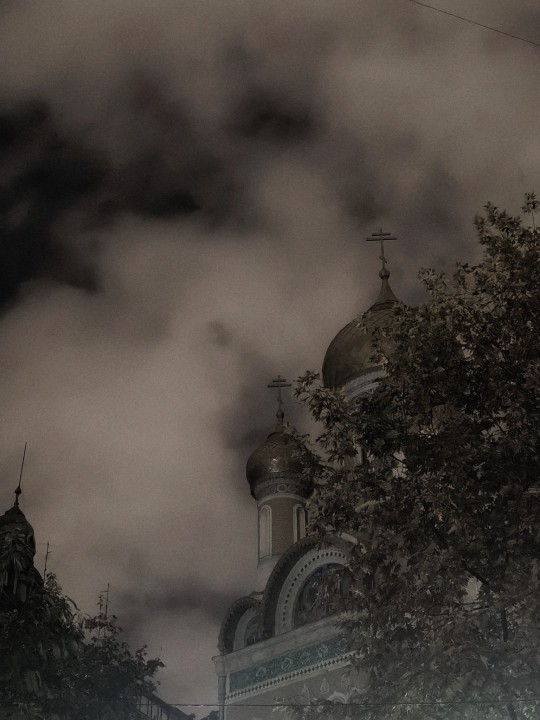
november night
#romania#romanian artist#bucharest#bucurești#orthodox church#Russian church#autumn night#eerie#Eastern Europe#balkans#visitromania#travel
15 notes
·
View notes
Text
Tomb of Mihnea, real Son of Vlad Dracula. The stone tomb of the son is beautifully designed and it is placed under the church organ. It can be visited.
Born 1460 and Died 1510.
Was voivode of Wallachia from 1508 to 1509
Buried in Sibiu Orthodox Cathedral, Romania.
Death by assassination.

#son of dracula#mihneacelrau#dracula#realsonofdracula#sibuicathedral#easternorthodoxchurch#voivodeship#voivode#princeofwallchia#monarch#houseofdraculesti#romaniannobility#romania#romanian#church#tomb#cathedral#eastern orthodox#balkans#middle ages#therealalucard
11 notes
·
View notes
Text

Sunday, God’s day
Photography: Emanuel Tanjala
#romania#rural romania#rural#photograpy#art#folk art#folk costume#romanian folk costume#church aesthetic#aesthetic#orthodoxy#orthodox church#sunday god’s day#eastern europe#transylvania#romania churches#sunday post#sunday church#people
38 notes
·
View notes
Text
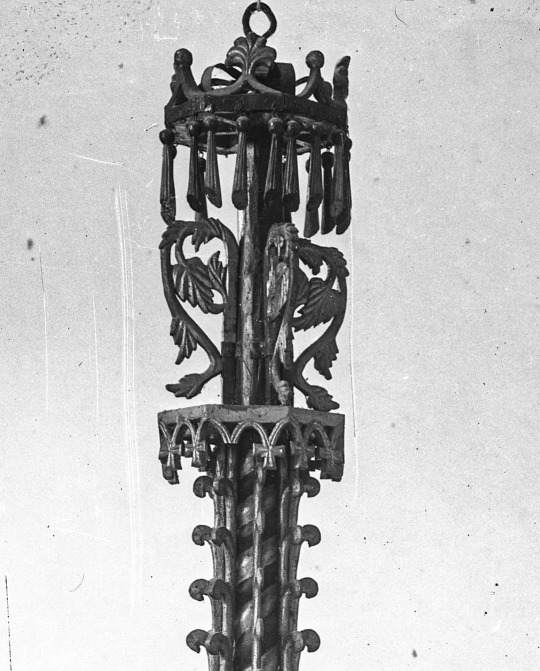


Here stand before you a superb peasant baroque, hand carved wooden chandelier made to resemble wrought iron ones. Inscription in old Romanian Cyrillic "Me, Nechita Iuone (John Nikita) made this chandelier..." dating somewhere between 150-250 years old by now. Comes from the small Orthodox church belonging to the small Transylvanian Romanian village of Sasa, photographed in 1935. Chandelier most likely doesn't exist anymore.
Text from: transylvania.heritage on Instagram.
13 notes
·
View notes
Note
I was wondering if Season 6 of Peaky Blinders made any sense to you and your cultural background. Do the words mentioned that Ruby speaks accurate? The meaning behind the black madonna, and for it to be a symbol of protection from bad spirits? I would love to hear your point of view about that specific season.
To be blank and honest, I really liked Season 6 for the entertainment factor, but didn't think it was all too accurate and played closely on stereotypes of our culture, rather than our culture in itself.
What Ruby says "tickna mora o'beng" has absolutely no significance to me whatsoever. I'm not even sure if it's Angloromani as none of those words is words I've heard or used, and I assume it's them thinking Romanian is Angloromani again.
The translation of the words, from what I know was something about the devil, but even that has little significance to us as the majority of us are either Orthodox, Church of England or in modern times, Pentecostal. The devil can't come to us due to our strong ties to religion.
However, the Black Madonna was bang on the money. I, myself, have a Black Madonna rosary and a Black Madonna statue in my bedroom. Though we don't call her the Black Madonna, we called her Sara-la-kali.
The Black Madonna is more fiction than reality, as we don't pray to her or anything like that. It's like an old family tale and we keep imagery of her just in case the tales are true. She's the Goddess of fertility, protection and good fortune so is better to keep her there just for the odds.
The burning of the vardo in S6 was very important to me and was probably the closest cultural connection I had seen. When many of us die, we choose to die with our vardo's. We do this for spiritual reasons, we believe if our items aren't rid of, we can't pass them over to the afterlife.
Burning the vardo sets our spirit free, free of torment. It also allows us to take our worldly possessions to wherever is next.
I do have so much to say about this, but I apparently take forever to type as this has taken me 15 minutes and I need to get my Saturday clean on. So, thank you so much for your question, I may make another post about it later, however, for now, this is my overall view. May you have a blessed day! <3
#izabesworld#peaky blinders#malfoyzsxpeakyblinders#peakyblindershelp#malfoyzsx#Romani#Romanichal#Angloromani#Roma#Rroma#Rromani#Rromany
39 notes
·
View notes
Note
I have returned back to the faith after a lapse in my youth (was raised Antiochian Greek Orthodox from a mixed Arab Asian household) and have found such joy and comfort in your tumblr along others. I was wondering if you recommend any good audiobooks regarding learning more about one's Orthodox faith outside of church. I have a visual reading issue so audiobooks or podcasts appreciated. God bless you ❤️
A precious lamb has returned to the flock. It is meet that we should make merry, and be glad: for this your brother was dead, and is alive again; and was lost and is now found. Glory to God!
Some of my favorite audio and video Orthodox resources are the free audiobooks recorded in St. Anthony Orthodox Monastery in Arizona. (<- that is a clickable link) They have audiobooks in a multitude of languages: English, Greek, Russian, Arabic, and Romanian. I highly recommend the book about St. Joseph the Hesychast. He is my spiritual father’s spiritual father’s spiritual father. (lol) So he is like my spiritual great-grandfather? It’s a very interesting and lovely book, although I think the recording for it is not yet finished.
I also LOVE watching the lives of the saints as presented by Trisagion Films on YouTube! Youtube is trash so use an adblocker, BUT Trisagion Films makes great edifying content. They sketch Byzantine style drawings of the saints and scenes in their lives and animate them, adding music and narration.
One of my favorite videos from them is about the life of St. Gabriel the Fool-for-Christ. (link) He was a saint of recent times, most famous for when he burned a large portrait of Lenin during a communist rally.
They also have one for the life of Saint Porphyrios, another recent saint. The video is pretty much the summarized version of the book about him, which we read in the book club. St. Porphyrios, although blind, was a clairvoyant saint who was able to see with his spiritual eyes.
One of the priests at a monastery I frequent actually met Saint Porphyrios. He told me that Saint Porphyrios was so well aware of his surroundings, that the priest I know didn’t learn he was blind during their meeting until somebody else told him later on after they met.
If you would like, you can join Panagia’s Garden Book Club too! We would love to have you. We share Orthodox Christian books, hymns, and currently we are trying to read the Gospel of James before Christmas. Send me a message and I will send you the Discord invite link.
God bless you, dear friend. Please tell me your name so I can add you to my prayers.
9 notes
·
View notes